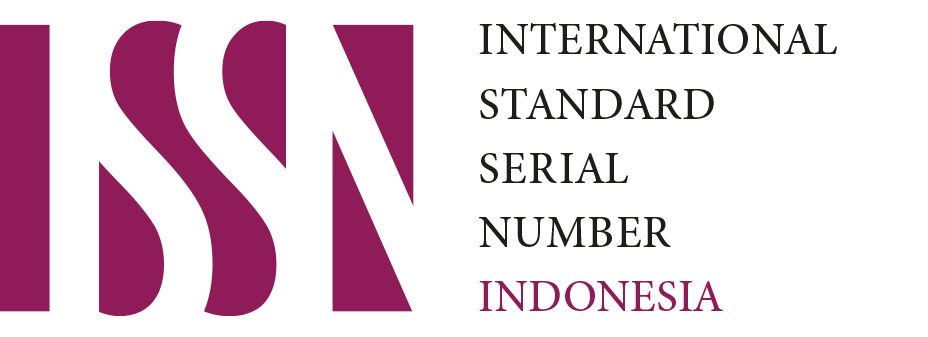Incubation publication model for quality improvement of scientific book: A case study of books on functional food
Downloads
Background of the study: Lack of information on functional food ingredients in book form has encouraged LIPI Press to create an incubation scheme for scientific publications that can Accelerate the process of publishing scientific texts, roommates are always constrained by the halt of creative ideas from the authors.
Purpose: The concept of implementing a scientific publication incubation scheme involves the process of transfer of knowledge and learning is a complex process and involves many parties, from the stage of ideas (ideation) until the book becomes available and is worth reading by the target reader.
Method: The novelty aspect of research in the context of this activity is the implementation of the book publishing scheme (scientific), thus the need to establish an appropriate model.
Findings: The concept of this the model emphasizes the aspects of knowledge management and communication between actors in publications items, namely, writers, experts, and publishers (editors).
Conclusion: In this case, knowledge management will identify the most influential factors in supporting the incubation modeling of book publications so that the acceleration of the publication process can be optimized.Downloads
Erneste, Pamusuk. (2005). Editing Second Edition. Jakarta: Gramedia Pustaka Utama
Gammayani, Nabawi, Alfatih (2015). Utilization of Information and Communication Technology in coordination between the National Library with the Provincial Library. Record and Library Journal 1 (2). 120-128. e-ISSN 2442-5168
Hartley, James. (2008). Academic Writing and Publishing: A Practical Handbook. London and New York: Routledge.
Helmi RL. & Diah AJ. (Ed.). (2015). Functional Food Industry Challenges. Opportunities adoption of data-driven innovation patents in the field of functional food. Jakarta: LIPI Press 2015.
Helmi RL. & Diah AJ. (Ed.). (2015) Managing Innovation Functional Food Division. Adoption Opportunities Innovation Patent Data Based on Functional Food Sector. Jakarta: LIPI Press 2015.
Helmi, RL, et al (2018). Book Publishing Guidelines LIPI Press. Edition. 2018 Jakarta: LIPI Press.
Helmi, RL. (2010). Assessment of Opportunities for Innovation and Implementation of Development of Functional Food Technology Platform in the field of LIPI. National Seminar on Chemical Engineering UNPAR 2010 with the theme 'Utilization of Biomass for Food, Energy and Chemicals', 22 April 2010 . Univ. Parahyangan Bandung.
Helmi, RL. (2010). Innovation mapping the status of R & D Results and technology development opportunity in the field of functional food in LIPI. 2nd Indonesian International Conferences on Innovation Entrepreneurship and Small Business, 11-15 july 2010. Organized by SBM ITB in collaboration with CIEL, in Serpong.
Helmi, RL. (2011). Patent-based comparative advantage analysis: a case study on functional food. The 3rd Indonesia International conference on Innovation, Entrepreneurship & Small Business (IICIES) 2011, 26-28 july 2011. Organized by SBM-ITB in Singapore.
Howlett, J. (2008). Functional food: from sciences to health and claims. Belgia: ILSI Europe
Judy, Person. et. all. 2012. Human Communication. McGraw-Hill Education; 5th edition.
Kim, Choi, Kim, Chung, Lee. (2018). Comparative analysis of the manuscript management systems for scholarly publishing. Science Editing, 5 (2). 124-134. https://doi.org/10.6087/kcse.137.
Kim, JY, Kim, DB, & Lee, HJ (2006). Regulations on health / functional foods in Korea. Toxicology, 22 (1), 112-118
Lee, SM and Olson DL 2007. Convergenomics: Strategic Innovation in the convergence areas. University of Nebraska Press, USA.
Media Centers and Reproduction (LIPI Press). (2018) Performance Report LIPI Press, 2017. Jakarta: LIPI Pres.
Media Centers and Reproduction (LIPI Press). (2018) Report of the Government Internal Control System (SPIP) Year 2017 Jakarta: LIPI Press.
Nezafati, N. Afrazeh, A. & Jalali, SMJ (2009). A dynamic models for measuring the knowledge level of organisasi based on Nonaka and Takeuchi models. Scientific Research and Essays, 40 (5), 531-542.
Nonaka & Takeuchi (1995) .The Knowledge-Creating Company. How Japanese Companies Create the Dynamics of Innovation. New York: Oxford University Press.
Rice, JI & Rice, BS (2005). The applicability of the SECI models to multiple-organizational endevours: an integrated review. International Journal of Organizational Behavior, 9 (8) .671-682.
Smith, Garret Lee. 2009, Communication Resource Center, Strategic Communication Planning. SAMHSA.
Tebbens, J. (2005). Functional foods and nutraceuticals: The development of value-added food by canadian firms. Ottawa: Science, Innovation and Electronic Information Division, Ministry of Industry
Whitetaker, Anne. (2009). Academic Writing Guide 2010: A Step-by-Step Guide to Writing Academic Papers. City University of Sea
Yoon, Byung-Ho. (2018). 2018 Intermediate-level training course for manuscript editors. Science Editing, 6 (1). 83-84. https://doi.org/10.6087/kcse.161
Record and Library Journal by Unair is licensed under a Creative Commons Attribution-ShareAlike 4.0 International License.
1. The journal allows the author to hold the copyright of the article without restrictions.
2. The journal allows the author(s) to retain publishing rights without restrictions
3. The legal formal aspect of journal publication accessibility refers to Creative Commons Attribution Share-Alike (CC BY-SA).
4. The Creative Commons Attribution Share-Alike (CC BY-SA) license allows re-distribution and re-use of a licensed work on the conditions that the creator is appropriately credited and that any derivative work is made available under "the same, similar or a compatible license”. Other than the conditions mentioned above, the editorial board is not responsible for copyright violation.


 57201398420
57201398420

























